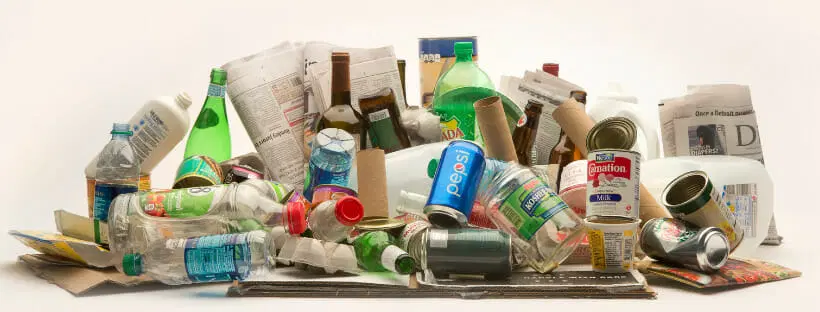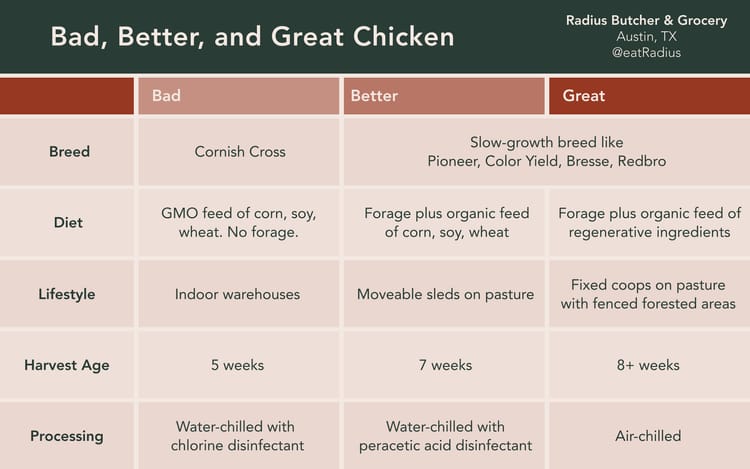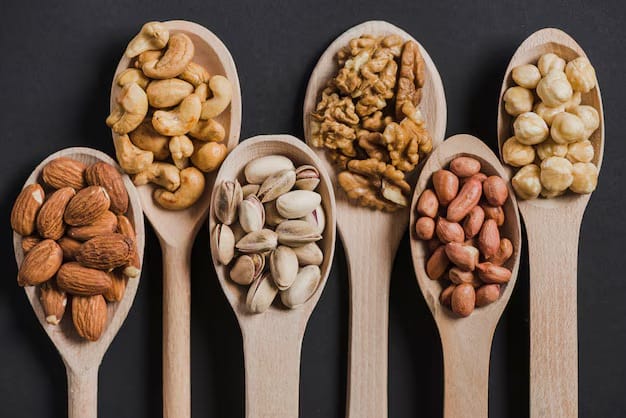Paper or Plastic? Neither — uncovering the dirty secrets of food packaging

PlasticList’s recent study to test for plastic chemicals in common foods was eye opening. The study tested ~300 food items for 18 types of plastic chemicals and found plastic in 86% of them. From Whole Foods wild caught salmon and grass-fed beef, to Wild Planet Albacore Wild Tuna, RX bars, and baby foods, plastic is inside almost everything we eat.
At least one of the 18 chemicals was found in every baby food, prenatal supplement, human breast milk, yogurt, and ice cream product that we tested, to name only a few categories. We also found plastic chemicals in all the products we tested from Starbucks, Gerber, Chobani, Straus, Celsius, Blue Bottle, RXBAR, Coca-Cola, Tartine, and Ghirardelli.
It’s unclear exactly how plastics get into the food supply — is it in the water that fish swim in and animals drink? Is it from packaging? Is it from the manufacturing process? What’s clear though is regardless of the source, plastic has significant negative health and environmental effects. From a health perspective, plastic is linked general inflammation, genotoxicity, oxidative stress, apoptosis, and necrosis, which may lead to negative health outcomes including cancer, cardiovascular diseases, inflammatory bowel disease, diabetes, rheumatoid arthritis, chronic inflammation, auto-immune conditions, neuro-degenerative diseases, strokes, and more.1 From an environmental perspective, plastic is a pollutant throughout its entire lifestyle — the feedstock is a petrochemical, the solvents used during manufacturing are toxic, and its decay process (or lack thereof) leaches chemicals into the environment.
While many consumers are aware of the negative health and environmental effects of plastic, there is confusion about new packaging types that are supposedly better for us and the planet. Alternatives include BPA-free plastic, compostable plastic, paper packaging, lined-paper packaging. But are these actually better for human health and the environment? Sadly, the answer is no.
At Radius, we’re determined to provide the healthiest food for our customers. That includes figuring out what packaging is best from human and environmental health perspectives. We’ve been researching all the possible packaging options to determine the best fit for our values. Here’s what we found, and how we’ll be making our packaging decisions accordingly.
- Standard Plastic: Standard plastic food packaging gets a bad rap for a reason. We should begin by saying that it’s hard to define standard plastic. Plastic packaging is diverse and made of many different polymers and additives, along with other components like adhesives or coatings.2 Many of the substances associated with plastic packaging lack any publicly available hazard data whatsoever.3 The ones we do know about cause enough concern, with proven effects including cancer, endocrine disruption, and more.4 On an environmental level, plastic production could be responsible for nearly one third of total amount of global carbon the world can safely produce without worsening global warming.5 Plastic never decays, piling up in landfills and releasing toxic chemicals into the soil and groundwater for millennia.6 It’s the worst kind of material for both our environmental and physical health, and yet it remains a standard option for far too many food manufacturers.
- BPA-Free Plastic: “BPA free” does not mean endocrine disrupting chemical free, and many products now contain bisphenol S (BPS) or bisphenol F (BPF) as substitutes for BPA, which may be unsafe for humans.7 8 One study tested 50 different “BPA-free” resins (plastic raw material), and found that some of them leached chemicals with measurable impact on hormone-sensitive cells.9 BPA free plastic causes many of the same environmental impacts as non-BPA free plastics, and BPA substitutes may cause additional environmental harm, accumulating in the environment over time.10
- Compostable Plastic: Studies suggest that compostable plastics may be as, or even more toxic than conventional and recycled plastic alternatives, and have particularly elevated levels of the forever chemical PFAS, a known carcinogen.11 Even the supposed compostability of this material is suspect. Many major cities are unable to compost these plastics, and the incomplete composting that occurs when well meaning consumers throw them into the green bin cause increased toxicity.12 This process also causes PFAS to leach into compost, spreading through soil that goes on to be used in parks and municipal facilities.13
- Paper: Paper seems harmless, but additives introduced into the material throughout the production process may interact with food within the packaging, and some chemicals used in recycled paper are endocrine disruptors and possible carcinogens.14 PFAS levels are high in paper food packaging, especially a compound called PFBA, which may accumulate in the lungs.15 From an environmental perspective, paper is a less impactful material. Although manufacturing does create emissions, there is no specific environmental concern linked uniquely to the manufacture of paper. In its natural, unlined state, paper is also biodegradable, compostable, and recyclable.
- Lined Paper: Lined paper shares the health risks of unlined paper, but with ever higher risk of exposure to PFAS. Used to create grease resistant packaging, PFAS are potent endocrine disrupters that accumulate in the body, and can be passed along to unborn babies by crossing through the placental barrier.15 Even the PFAS-alternative linings have dubious health implications.16 These high PFAS levels also exacerbate lined paper’s environmental impact. When lined paper is disposed of, PFAS can spread through air, soil, or water, accumulating and causing increased harm.17
- Glass: Nicolas Appert, the man who invented modern food preservation in the early 1800s, famously used glass bottles and glass has been used in home and commercial preservation for generations. Glass has stood the test of time and is the least risky. Made of simple organic materials rather than oil, most glass has no potential to contaminate or even interact with the food it contains. Many brands avoid using glass packaging simply because of the increased costs of shipping a heavier material, a fact that contributes to glass’ larger transportation carbon footprint than plastic. However, this isn’t an issue when renewable energy sources are used in the food transport process. Overall, glass is an inherently more environmentally responsible choice, especially when it can be reused or recycled.
When you assess all the food packaging options, glass is the clear winner. This old school material may not be as flexible or light as plastic, but its nonreactive nature means that it safely contains food without leaching harmful compounds into our environments or bodies.
This makes sense when you consider the production methods used to create glass vs. plastic. Glass is made by superheating sand, sodium bicarbonate, and calcium carbonate—all ingredients that occur in nature with no known health impacts. To create plastic, you start with crude oil, which undergoes a complex process of interaction with a series of chemicals whose effects on the human body may or may not be known. This means increased contamination at every step of the production process, and increased risk within the final material. The process to waterproof plastic and paper introduces toxins, regardless of what specific chemical is used. So while there is diversity in plastic and paper options, they’re all bad. Only an inert material like glass can be waterproof in a way that's risk free.
Glass is also the winner on environmental metrics. While it is heavier, glass is 100% recyclable. It can be melted down and recycled over and over again to make new glass products with no loss in quality. Glass recycling in the United States could be improved by switching to multi-stream models used by other countries to increase material recovery rates, but glass as a material is still by far the most adaptable and ready for reuse.
At Radius we’re committed to use glass packaging as much as possible. All of our in-house prepared foods (stocks, charcuterie, meatballs, sauces, etc) will be packaged in glass. Our sourcing efforts for consumer packaged goods prioritize glass jars instead of plastic bottles whenever possible—although we have found that this is very difficult; just one more reason to focus on buying fresh food! As the safest, healthiest, and most environmentally responsible food packaging option on the market, glass is our pick for the best way to make sure your food contains nothing but the nutrients you need to thrive.
Studies
Standard Plastic
Health
- https://www.ciel.org/project-update/plastic-and-human-health-a-lifecycle-approach-to-plastic-pollution/#:~:text=Microplastics%20entering%20the%20human%20body,outcomes%20including%20cancer%2C%20cardiovascular%20diseases%2C
- https://www.sciencedirect.com/science/article/pii/S0048969718338828
- https://foodpackagingforum.org/news/chemicals-associated-with-plastic-packaging
Environment
- https://www.genevaenvironmentnetwork.org/resources/updates/plastics-and-health/
- https://www.nrdc.org/bio/renee-sharp/hidden-fossil-fuels-plastic-production-drives-climate-change
- https://www.unep.org/news-and-stories/story/plastic-planet-how-tiny-plastic-particles-are-polluting-our-soil
BPA-Free Plastic
Health
- https://endocrinenews.endocrine.org/warning-signs-how-safe-is-bpa-free/
- https://www.sciencedirect.com/science/article/pii/S0015028214023516
- https://ehjournal.biomedcentral.com/articles/10.1186/1476-069X-13-41
Environment
- https://www.sciencedirect.com/science/article/pii/S014765132031318X
- https://core.verisk.com/Insights/Emerging-Issues/Articles/2022/December/Week-2/Compostable-Plastic-Products-PFAS
Compostable Plastic
Health
Environment
Paper (Lined & Unlined)
Health
- https://pmc.ncbi.nlm.nih.gov/articles/PMC6801293/#:~:text=Naphthylamine%2C%20benzidine%2C%20benzophenone%20and%204,pregnant%20women%20(Muncke%202011)
- https://www.consumerreports.org/health/food-contaminants/dangerous-pfas-chemicals-are-in-your-food-packaging-a3786252074/
- https://cen.acs.org/materials/coatings/PFAS-paper-food-packaging/99/i36
Environment



